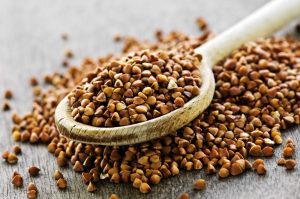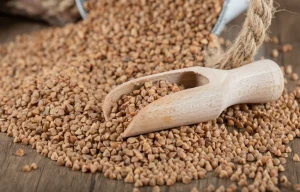
Buckwheat advantages. Buckwheat, which is neither a grain nor a wheat, is nutrient-dense and has several health advantages. Buckwheat, which is gluten free and frequently regarded as an ancient grain, is actually a pseudocereal, a plant that produces starchy seeds that can be utilized similarly to rice or cereal. This seed, which is derived from a plant that is closely related to rhubarb, has a very unique flavor: nutty and earthy, with a soft, chewy texture. Buckwheat flour, kasha, soba noodles, cereal, tea, and even honey are all made using it.
BUCKWHEAT ADVANTAGES
Compared to wheat and rice, buckwheat is higher in protein and antioxidants and is packed with minerals. All nine of the essential amino acids are present in this complete protein, which the body needs from meals. When eating largely plant based foods, complete proteins can be crucial. According to Barkyoumb, “the minerals in buckwheat are absorbed particularly efficiently since it is low in phytic acid, a frequent inhibitor of absorption present in grains and seeds.” It is also rich in minerals like magnesium.

The main flavonol antioxidant in buckwheat is rutin. According to a recent assessment of the literature, rutin may have promising neuroprotective benefits, such as defense against Huntington’s disease, Parkinson’s disease, and Alzheimer’s disease, because of its antioxidant activity and anti-inflammatory properties. The current research, however, is preliminary and has compared whole buckwheat with rutin alone.
2. Promotes Gut Health
Buckwheat’s resistant starch, dietary fiber, and prebiotics all contribute to intestinal health. For fiber, one cup of cooked buckwheat offers sixteen percent of the Daily Value (DV). The effects of fiber on gut motility the passage of food and waste through the digestive system and the avoidance of constipation are among its most important advantages. Additionally, fiber supports good immune function and anti-inflammatory effects by maximizing the diversity of gut microorganisms.
3. Encourage the Management of Diabetes

Buckwheat’s inherent qualities could aid in managing or preventing the illness. Buckwheat has a lower glycemic index (GI) than cereals such as bulgur wheat, barley, spelt, and millet. This implies that it causes a smaller blood sugar peak and raises blood sugar levels more gradually over an extended period of time.
4. fiber
Buckwheat has fiber, which has also been repeatedly linked to a lower risk of type 2 diabetes. Its anti-inflammatory properties and capacity to enhance insulin sensitivity the degree to which insulin effectively lowers blood sugar levels may be partially to blame for this.
5. Encourage Heart Health

Because it may not be identified until a person exhibits symptoms of a heart attack, heart failure, arrhythmia, or irregular pulse, heart disease is commonly referred to as “silent.” Buckwheat eating may help safeguard heart health, according to research. According to a review of 13 earlier research papers, buckwheat may help lower blood fats called triglycerides and total cholesterol. Its fiber, resistant starch, antioxidants, plant protein, and blood sugar-regulating properties may all contribute to its heart-protective benefits. The latter is noteworthy since it has been demonstrated that type 2 diabetes doubles the risk of heart disease.
Summary
The nutritional profile of buckwheat, a gluten-free pseudo-grain, is comparable to that of whole grains. It offers antioxidants, fiber, complex carbs, vitamins, minerals, and plant protein. Buckwheat’s special nutrient combination and anti-inflammatory properties are associated with a number of health advantages, such as defense against obesity, heart disease, and type 2 diabetes. If you believe you could be allergic to buckwheat, stay away from it and be tested properly by an allergy specialist.